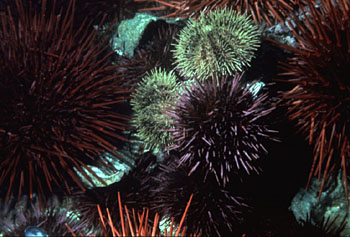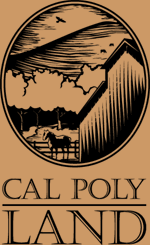|
Invertebrates
|
|
 |
|
|
Invertebrates are the types of animals that you see clinging to the pilings underneath the Cal Poly pier at Avila. These creatures all have one thing in common; they all lack backbones. From sea stars to jelly fish, this group of animals will play an important role in hands on learning for classes that visit the pier. With a temporary home in the flowing water lab, the goal is to allow students to get a closer look at the numerous species that inhabit the surrounding water. Snails Mollusc is a Latin term meaning “soft-bodied”, and these animals are often protected by a hard, protective covering. This phylum makes up an important food source for many marine animals. All molluscas have mantles or underlying skin which produces the shell. They also have siphons or fleshy tubes that draw in food and water. Gills are common organs used to respire by removing oxygen from the water that all molluscas possess. Spiny Shelled
Animals Echinoderm is a Greek word meaning “spiny-skinned.” Animals in this phylum all share a few common characteristics. All echinoderms have an endoskeleton or and internal skeleton made up of ossicles, a type of calcareous structure. The compactness of the ossicles determines the degree of flexibility of the animal. The adult body symmetry radiates around a central axis as well. Echinoderms also have tube feet which they use for locomotion and also for respiration. The tube feet operate using a hydraulic, or water-vascular, system. Jointed Animals Arthropod is a Greek word meaning “jointed appendage.” With perhaps more than one million known species, this is the largest and most diverse invertebrate phylum. Arthropods make up more than 80% of all animal species. Animals in this phylum share common characteristics including segmented bodies, jointed appendages, and an exoskeleton made of chitin. As it grows, an arthropod must molt, shedding its old exoskeleton. Phylum – Cnidaria
The cnidarians are
a diverse group. About 9,000 species are known worldwide, and
they are found throughout the seas from densely populated intertidal
zones to great depths.
|
